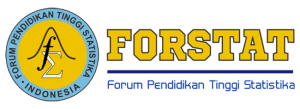Application of Geographically Weighted Logistic Regression in Modeling the Human Development Index in East Java
DOI:
https://doi.org/10.34123/jurnalasks.v16i1.587Abstract
Main Objectives: pinpoint the factors influencing HDI, taking into consideration location and spatial factors. Problems: The Human Development Index (HDI) in East Java often fails to reflect actual conditions accurately, as disparities exist among districts and cities, with some falling below government expectations. Novelty: GWLR extends logistics regression by incorporating spatial factors, allowing for the identification of regional differences and influential factors affecting HDI based on actual data. Methods: To address this issue, the Geographically Weighted Logistic Regression (GWLR) method is employed. The independent variables used are Expected Years of Schooling (X1), Open Unemployment Rate (X2), and Morbidity Rate ( X3) in 2021, while dependent variable is the Human Development Index (Y). Finding/Results: The study reveals that GWLR provides a superior model compared to Ordinary Logistic Regression, indicated by a lower Akaike Information Criterion (AIC) of 28.72. Additionally, the GWLR model with Fixed Gaussian Kernel weights outperforms other weighting methods. At 90% confidence level, the significant variables influencing HDI are expected years of schooling (X1) and the open unemployment rate (X2). Given the relatively low HDI in Indonesia, the East Java Government should focus on improving these key areas to enhance HDI across districts and cities in the region.















